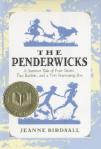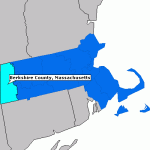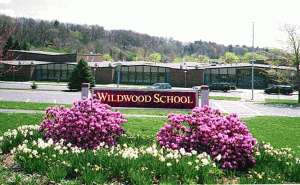Johnny Tremain is a historical fiction book set in 18th century Boston. This book tells the story of Johnny Tremain over a two-year span from the summer of 1773 through the spring of 1775. At the beginning, Johnny is a 14 year old apprentice to a silversmith named Mr. Lapham.
Not long into the story, he severely burns his right hand on hot liquid silver in an accident. His hand is thereafter crippled, forcing Johnny to seek new employment. After several weeks of walking around Boston in a depressed state of mind, seeking an apprenticeship in a new trade and being turned down by most artisans because of his hand, Johnny discovers the printing office of the Boston Observer newspaper.
Bostonians are increasingly rebellious in these years leading up to the Revolutionary War. At the Boston Observer, a patriotic newspaper, Johnny finds a new home with the Lorne family and their cousin Rab, an apprentice printer. Rab is a year or two older than Johnny. Johnny admires and looks up to Rab. At the Observer, he gains a new job delivering newspapers in Boston, the surrounding countryside, and nearby towns. Many prominent members of the Sons of Liberty, such as  John Hancock, Paul Revere, and Samuel Adams, secretly meet in the Observer office. Johnny becomes closely involved in the revolutionary effort.
John Hancock, Paul Revere, and Samuel Adams, secretly meet in the Observer office. Johnny becomes closely involved in the revolutionary effort.
Johnny delivers secret messages between members of the Sons of Liberty. He also spies on the British by offering to deliver messages for them. He participates in the Boston Tea Party in December 1773. He also carries important messages that assist Paul Revere in preparing for his famous midnight ride to Lexington in April 1775.
This is a reenactment of the battle on Lexington Green at dawn on April 19, 1775. Rab is wounded here and dies two days later.
Johnny Tremain is a story of a boy who grows into a man. He learns from Rab about controlling his anger. He learns to be humble and accept aspects of life that he can’t control–such as his crippled hand. Johnny discovers how to be a good friend through the examples of Rab and Cilla, his childhood friend.
As with all historical fiction, Johnny Tremain is a mixture of fact and fiction. Esther Forbes (1891-1967) was a historian who studied Massachusetts history. From the wealth of geographical and historical facts in this book, it is clear that Forbes knew revolutionary Boston very well! Johnny Tremain is set in magnificent detail on the Boston landscape of the 1770s. Johnny and Rab walk and run on many streets that no longer exist. Many of the great patriots of the Revolution, such as Samuel Adams and Doctor Joseph Warren, are characters in this book. Finally, real historical events are interwoven so closely with the plot of Johnny Tremain that, for the reader, it seems that some of these events could not have taken place without Johnny. For example, Johnny gives the secret signal that calls many of the “Indians” to Griffin’s Wharf for the Boston Tea Party–even though Johnny was never a real person! Forbes’ story is so convincing that the reader inevitably believes that, if not Johnny, then someone must have played his part in these major events of history.

This is Old North Church. It was called Christ Church in the book. Today there is a tall building (on the left in the picture) close to it. In the 1770s, the steeple of this church was clearly visible from long distances--even from across the river in Charlestown. That is why it was chosen to send the lantern signals on the night of April 18, 1775.
Most of the setting of Johnny Tremain is factual. Wharves, streets, parks, squares, and buildings in the book are all real–although some no longer exist. You can see many of them today, although some look very different and for others, it takes some research to figure out exactly where they were. For example, Boston’s waterfront has changed quite a lot since the 1770s. The city of Boston has been “creating” more land for at least 200 years! This may be surprising to you if you’ve never heard about this aspect of Boston’s history. Basically, soil and rock has been pushed out into the harbor, bays, and rivers to make more land. Some places that used to be next to the water are now far inland. In this blog, you’ll see a Google map of today’s Boston. I have used a wonderful website called Historic Map Works to see where many places in Johnny Tremain are located today. The website’s makers determined which places on the historical maps they know the precise location for–even today–then use that information to lay these old maps on top of current Google maps in perfect scale. Exciting, isn’t it!!
You can see some major locations in Johnny Tremain today; for others, you need to have some imagination. In the book, British soldiers pitch their tents on Boston Common. (167) Back then, the Common didn’t look as much like a park as it does today. The Common had “acres upon acres of meadow and cow pasture, hard ground cleared for the drilling of militias.” (116) Another place that has changed is Griffin’s Wharf, where the Boston Tea Party occurred. Today, if you walk in the area of Milk and Broad Streets in the North End, you will be standing where the Tea Party happened. It may however be difficult to imagine Johnny and Rab cracking open tea chests with their axes because the water and ships are so far away now.
In the book, British soldiers mockingly play Yankee Doodle on fife and drum as they leave Boston on April 19, 1775–these are reenforcement soldiers sent for by British Colonel Smith. (282) As badly wounded British soldiers return to Boston after the battles of Lexington and Concord, Boston townspeople observing them in the darkness whistle Yankee Doodle. (302) For more on the unusual history of this song, see “Yankee Doodle: Lyrical Legacy” from the Library of Congress.
If you ever stand at the corner of East Berkeley and Washington Streets, hop into a time machine in your mind back to 1770. If you looked west and northwest, you would see a muddy salt marsh that would have more or less water in it depending on the time of day; this area today is called the Back Bay neighborhood of Boston. If you looked east, you would see open water, a large part of Boston Harbor. This intersection was the location of Boston’s Town Gate on “The Neck.” Johnny wanders here in his despair after being shunned by Isannah because of his crippled hand. (79) Here too are the gallows that make Johnny shudder.
Many of the characters in Johnny’s world of revolutionary Boston can also be found in history books. The Boston Observers are a fictional group. However, Forbes may have had in mind the historical Long Room Club, a group of patriot leaders who shared direction of the Sons of Liberty prior to the Revolution; the Long Room Club met in a room above the printing office of the Boston Gazette. (See Mr. Ronald Blackington’s writing on this from the Massachusetts Historical Society). Many members of the Long Room Club of history are also members of the Observers in the book: Samuel Adams, John Hancock, Paul Revere, Reverend Sam Cooper, James Otis, John Adams, Josiah Quincy, Doctor Joseph Warren, Doctor Benjamin Church. They were all Sons of Liberty, a group that was very secretive because their activities were considered treasonous by the British government.
Forbes tried as much as possible to describe these famous people in her story just as they were in history. For example, Johnny “did not know one thing against [Doctor Church], but he felt the man was crooked, and he knew that Paul Revere and Joseph Warren felt as he felt about Church.” (140) The real Doctor Church of history was convicted by the Continental Congress in November 1775 of “criminal correspondence” with the enemy, i.e. British troops; a letter of his to a British officer had been intercepted by patriots in July 1775. Some historians disagree with how Dr. Church is portrayed in Johnny Tremain; they think that Dr. Church was “strongly committed” to the Sons of Liberty and what they stood for until he was offered a bribe by General Gage to spy for the British–in other words, maybe the other patriot leaders were not suspicious of his allegiance in the way that they appear to be in the book.

James Otis is a member of the Boston Observers in the book. Mr. Otis delivers a speech to the Observers in which he argues that the Revolution should be fought so that "a man can stand up." (223-229)
Johnny Tremain also has its fair share of fictional characters–remember, this is historical fiction! To begin with Johnny himself is not part of history. The Laphams, the Lyte family, the Lorne and Silsbee families, Seargent Gale, and Pumpkin are some of the characters in Johnny Tremain who you will not find in history books. However, Forbes has written this book with such skill that the reader can easily believe that history could have happened this way. Many of these imaginary characters are probably similar to real people in Boston’s history. For example, there were many silversmith apprentices in Boston in the 1770s, one of whom could quite possibly have been involved in the Boston Tea Party–a list of people probably involved in the Boston Tea Party includes several boys as young as 14 years old.
The Boston of Johnny Tremain
Johnny Tremain’s plot is carefully placed on the real timeline of pre-Revolution Boston history. Forbes tells a story that places Johnny at the center of several major historical events in pre-Revolution Boston. Johnny is friendly with Boston patriot leaders such as Paul Revere, Dr. Joseph Warren, and Samuel Adams. As such, he is assigned significant roles in the Boston Tea Party, Paul Revere’s midnight ride, and in preparing for the battles of Lexington and Concord. I’ve already mentioned above how Johnny stands outside of Old South Church on the afternoon of December 16, 1773 to transmit a secret signal to begin the Tea Party. (154-156) Johnny is sent by Dr. Warren to Paul Revere’s house to let him know that the British would be crossing the Charles River on the night of April 18, 1775, probably headed for Lexington and Concord. Johnny also has the important role of letting Mr. Robert Newton, sexton of Old North Church (Christ Church in the book), know that he needs to light two lanterns in the church tower–the agreed upon signal for Charlestown patriots that the British would be initially traveling by sea, not by land. (269-271) Finally, it is partly through Johnny’s gathering of military intelligence from Dove, British Colonel Smith’s stable boy, that Warren and Revere are able to warn Lexington and Concord’s Minute Men of the British plans. (263-268) How ever did these major historical events happen without Johnny there to move them along?! Fiction is mixed so intricately with fact in this story that it takes some research to figure out which is which.
Johnny’s Newspaper Delivery Route
In this post, I haven’t even really begun to sort out the facts from fiction in Johnny Tremain! This book is rich in historical details, from anecdotes and descriptions of important Revolution-era people, both patriot and Tory, to the geographic layout of Boston in the 1770s. Read this book for a wonderful picture of what Boston was like just before the Revolutionary War. Johnny Tremain will give you a good idea of how it would feel to be a teenager caught up in the feverish wave of American patriotism that eventually resulted in independence and a new nation.
*I have inserted page numbers in this post from Random House’s Yearling edition of Johnny Tremain, first published in 1987. The cover of this particular edition appears near the top of the post.







